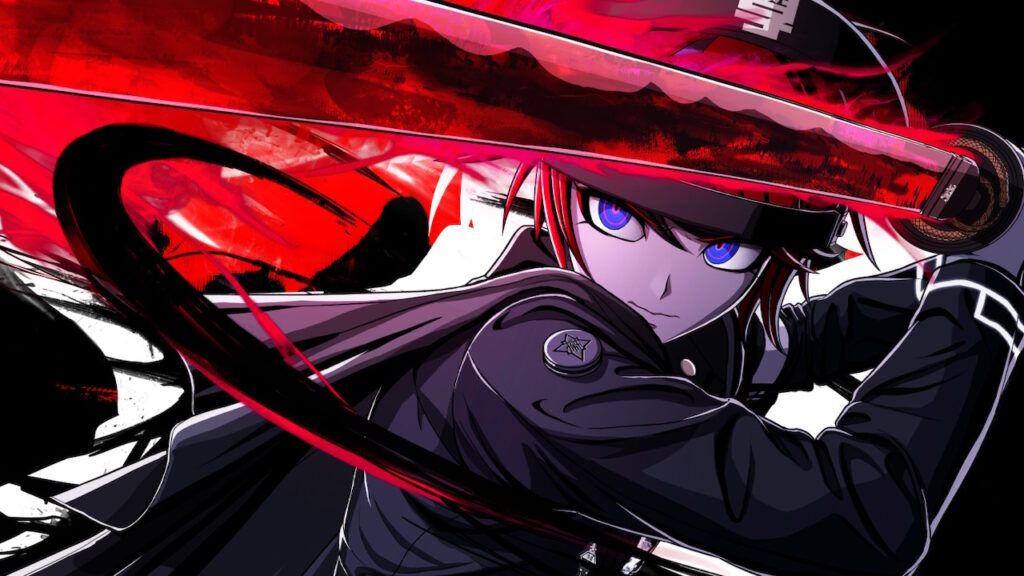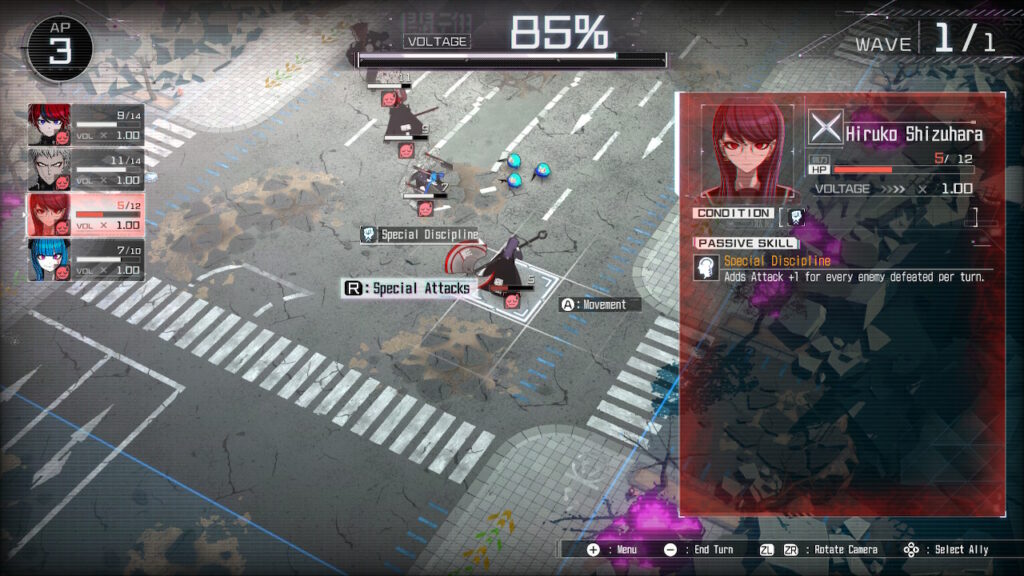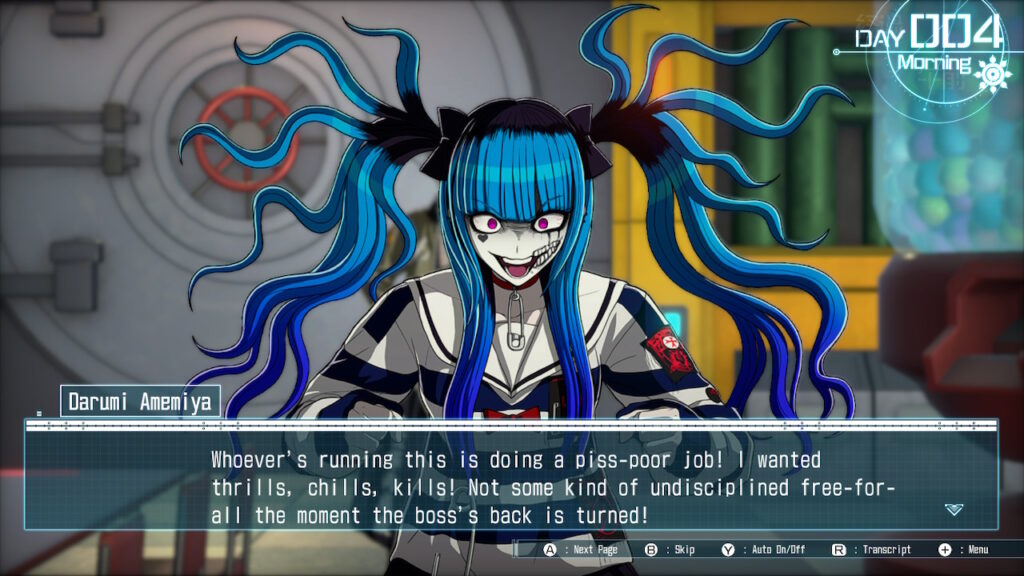[Review] The Hundred Line: Last Defense Academy – Nintendo Switch
Developed By: Too Kyo Games
Published By: Marvelous USA
Categories: SRPG, Visual Novel
Release Date: 04.24.25
Price: $59.99
*Game Download Code graciously provided for the purpose of review
Fans of visual novels should recognize the names Kazutaka Kodaka and Kotaro Uchikoshi. Kodaka is the creator of Danganronpa while Uchikoshi worked on both Zero Escape and AI: The Somnium Files. This year, the two joined forces to craft a new experience that’s far outside their comfort zones. The Hundred Line: Last Defense Academy is an ambitious tactical RPG with visual novel aspects.
Takumi Sumino is an ordinary student living in the Tokyo Residential Complex, a domed city that’s cut off from the rest of the world. His life is mundane and predictable, nothing exciting ever happens. That is until mysterious monsters infiltrate the city and begin rampaging. The team doesn’t pull any punches, players see nothing but death and destruction right at the start.
Takumi’s close friend Karua is about to be killed by one of the monsters, until a weird character known as sirei grants Takumi a special power that allows him to fight and save Karua. Following the battle, he’s further ripped from his normal life as he wakes up in an unfamiliar school that’s outside the complex alongside other students. He learns that he’s been selected as one of humanity’s last hopes and is given the task of defending the school from the monsters, known as School Invaders.
The students must protect the school for one hundred days. If they were to fail, it could bring an end to the human world. Not everything is explained properly to the students, which leads to a few tense moments and not everyone wants to participate at first.
For those of you who have played through the demo, you know this because the demo covers the first few days. But that’s just the tip of the iceberg. Much of the gameplay is battling, but in terms of story, I’d say only five to ten percent is covered in the demo, if not less. There’s a lot of exposition into each character at the start, but the more you play, the more is thrown at you, rather brutally I might say.

If you’ve played their previous games, you should be well aware of how intense the themes and actions can get. It’s no different here, with the story chock full of intense moments and a ton of well-written characters. It can be a very serious game with a lot of dark humor, and after playing for around twenty hours, the experience made me think of the first time I watched the Re:Zero anime.
Another fantastic element of the storytelling is the branching storylines. Every action has a consequence that leads to one of a hundred unique endings. You thought a game like Fire Emblem Three Houses was big with its three initial routes, but Hundred Line is on another level.
I’m not a mad man. I haven’t come anywhere near completing even a fraction of all the endings, nor do I think I ever will. The difference between each ending isn’t minor, and I suspect it may take hundreds of hours for someone to run through all of them. Everyone’s experiences could be drastically different as a result.
That’s pretty much what to expect from the storytelling of Kodaka and Uchikoshi. But the gameplay is a whole other story. The battles are your standard tactical RPG experience for the most part. You play on a small grid battlefield and your objective is to defeat all the enemies or defend a person or object. Each student has their own fighting style, special skills, and ultimate moves.
Each action costs an Ability Point, but unlike other turn-based games, the AP you gain each turn is shared amongst all the students who are fighting. You can have one student do multiple actions at the cost of another student doing none. This is useful for moving a student out of a dangerous situation quickly or finishing off a tough enemy that the character is near.

There’s also a voltage meter located at the top of the screen. As you attack, this fills up and will allow you to do your ultimate move or receive a special buff. There are a few other combat mechanics, but because they tie to the story so well, I think it’s best to experience them first-hand. Overall, the combat is fun and straightforward and can be a good challenge when there’s many enemies at once.
Another big aspect of the game is free time, you’re not always battling school Invaders or progressing the story. Early on, you’re granted the freedom to roam the school when you aren’t fighting. Take advantage of the various facilities, boost your stats or relationships with other students, or venture beyond the school grounds to explore the post apocalyptic world.
Every time you interact with another student, you gain a boost to a stat such as Linguistics, Math, or Science. You need to be a certain level in order to boost your skills. You also get to learn a lot more about the characters this way.
Regular battles are great, but exploration was what I had the most fun with. It’s a giant board game with more than a hundred tiles for you to travel through with up to three other party members. Each tile does something different. Some will give random items or different chance encounters. Others will be battle spaces, but these battles are quick, unlike the main story ones.
It’s a giant game of chance and skill. These short battles were fun because there were only a few enemies each time and all the items you collect are turned into raw material when you return to the school. The material is used to do a variety of useful upgrades as long as you have enough BP and your stats are high enough. Initially I thought the game would be limited since the school is the main hub and battleground, but I was so wrong.

Even though the gameplay is great, there were aspects of the game that I thought were superior. The phenomenal story was one, but I also really enjoyed the sound design and visuals.
When I first booted up the game, I was met with some fantastic music. Masafumi Takada did an amazing job with the soundtrack, I especially loved the tracks Sirei’s Supervision, Outgoing Hope and Cacophony. There was also some really good voice acting, but there were plenty of visual novel moments that were missing fully voiced lines. Not a big deal but, occasionally broke the immersion.
The visuals were great as well. There was a lot of detail in the battlefields and when it came to enemy designs. Combat attacks and movement was fluid too. There were also a ton of cutscenes and events that looked great. My favorite aspect of the visuals as how good in-game artwork and character models and portraits looked.
Speaking of characters, you’re going to love all of them. Hundred Line has such a diverse cast that you learn so much about. Takemaru Yakushiji is a badass with anger issues. Shouma Ginzaki has negative self-esteem. Darumi Amemiya is crazy and occasionally throws around references to other games and anime. Then you have the mysterious Sirei and other characters introduced later.
You’re likely going to fall in love with multiple characters during the first few hours. Unfortunately, that might not be the best thing to do depending on how things play out in the later days. As mentioned before, it’s a very tense and emotional game. The characters, their personalities, and their growth are a huge part of what makes the storytelling so good.
Hundred Line has so many things going for it and none of them are half-assed. If you’re a fan of tactical RPG’s, you’ll love it. If you’re a fan of Persona, you’ll love it. If you aren’t a fan of either, the story and other aspects will still wow you enough to win you over. It’s a fantastic game that deserves to be played by everyone. A week ago, Kodaka himself claimed that this was his best work yet. If that doesn’t inspire you to play, I don’t know what will.
5/5

